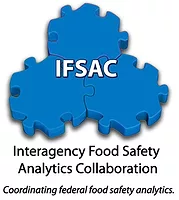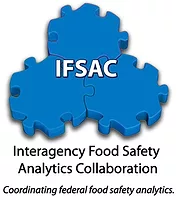IFSAC: New Food Categories to Pinpoint Foodborne Illness Outbreaks

The Foodborne Pathogens Disease Journal now features new research from scientists with the Interagency Food Safety Analytics Collaboration (IFSAC). The team has analyzed how to categorize foods linked to foodborne outbreaks.
IFSAC’s paper, “An Updated Scheme for Categorizing Foods Implicated in Foodborne Disease Outbreaks: A Tri-Agency Collaboration", serves as an update to the Centers for Disease Control and Prevention’s previous food categories. IFSAC has come up with 234 food categories, comprised of five subcategory levels.
Highlights of the IFSAC food categorization scheme include:
- Close alignment with the food product definitions used by the U.S. Food and Drug Administration and the U.S. Department of Agriculture’s Food Safety and Inspection Service for regulatory purposes;
- Separation of aquatic animals, land animals, and plant foods into increasingly specific animal (for example, fish, dairy, beef) or botanical (for example, fruits, fungi, root/underground) food categories;
- Separation of foods based on food processing, preparation, and consumption type (for example, ready-to-eat meats, canned/containerized produce); and
- New categories for “Other” foods and foods not assigned to a category under the previous scheme (for example, “Multiple-Ingredient Food,” “Multiple Foods Reported”).
The IFSAC food categorization scheme provides more specific descriptions of the foods that cause outbreaks in the U.S. The increased specificity of food categories may help improve source attribution analyses, eventually leading to improved foodborne illness source attribution estimates and enhanced food safety and regulatory efforts.
Sign up for Food Safety Magazine’s bi-weekly emails!
Subscribe to our podcast: Food Safety Matters!
Looking for quick answers on food safety topics?
Try Ask FSM, our new smart AI search tool.
Ask FSM →







